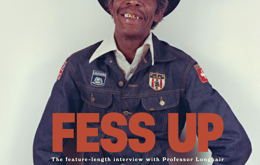Every year at this time, I look forward to the ballet folklorico competitions, a part of the 4-day Folklorico and Mariachi Festival at the Rosarito Beach Hotel, the first week of October. The event is the brainchild of Gil Sperry, aficionado of both genres and indefatigable mover and shaker when it comes to raising funds for the Boys and Girls Club.
Being one of three judges these last four years has allowed me to rekindle my passion for folklorico.
As is the custom, and for logistical reasons, each group presents the dances and music of one Mexican state. Central to folklorico tradition is the careful observance of music, choreography and costumes – minute details are of prime importance – what is indigenous to the state. Thus authenticity is a large factor in the rating of each performance.
Perhaps most colorful and best known is the state of Jalisco, home of the Mexican hat dance, and perhaps also responsible for the stereotype of folklorico as a lot of shuffling around while flapping huge skirts and looking pretty. The women’s costume consists of three circles of fabric for the skirt with matching fitted bodice decorated with kilometers of ribbons of contrasting colors.
The men wear the traditional ‘Charro” silver studded suit and oversize sombrero. It was the choice of the first group hailing from San Diego.
Cuchuma, a group from Rosarito, presented the state of Michoacan. First staged was a much loved rendition of the dance of the old men. It originated making fun of the Spaniards as hunched over stick wielding old men. Mops as headdresses and white face masks added humor to their antics. The performance offered a variety of other dances in the traditional costume of white embroidered blouse, red skirt and black apron for the women and white loose costume with red sash for the men. All wore “huaraches” except for the part where the women danced barefooted on top of upside down round clay pots. Such mastery!
All the way from Carson, California, the group Sabor de Mexico represented the Aztec tradition. The music, consisting mostly of drum beating and wrist and ankle rattles of the dancers accompanied a display of always rhythmic and sometimes acrobatic patterns. The costumes were short tunics of silver and gold with elaborate giant feather headdresses. These Indian dances are a relatively recent addition(a few decades) to the Mexican folklore. Politically correct as it may be, it was a thoroughly enjoyable spectacle.
Last in the competition was the group Yoneme from the very prestigious high school Lazaro Cardenas in Tijuana. From the moment they appeared, presenting the state of Vera Cruz, they displayed complete mastery of their craft. White muslin and lace (yards and yards of both), a black apron and a white lace shawl for the women paired with the white pants and “guayabera” for the men. They performed, among many numbers, the obligatory “la Bamba” where two dancers tie a knot in a red ribbon on the floor through a series of steps.
Although Yoneme placed first in the competition, each group with its own distinctive style projected love of the their art. Their greatest reward is the ability to promote and transmit Mexican culture.
 Baja Review A community newspaper serving Ensenada, Valle de Guadalupe, and Rosarito in Northern Baja California
Baja Review A community newspaper serving Ensenada, Valle de Guadalupe, and Rosarito in Northern Baja California





